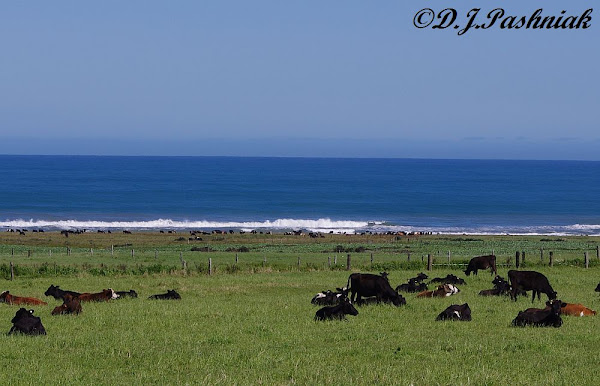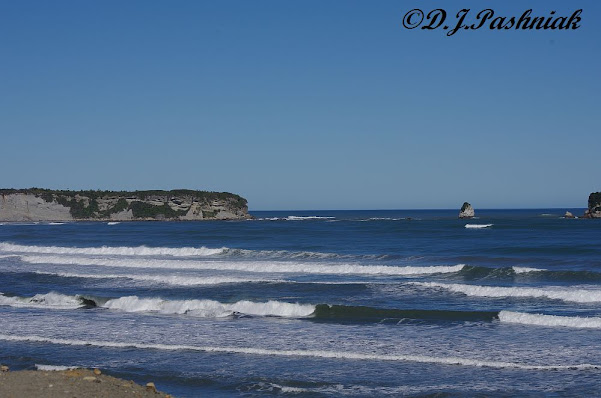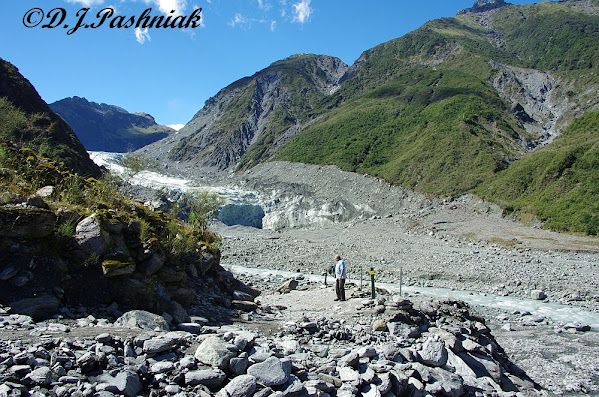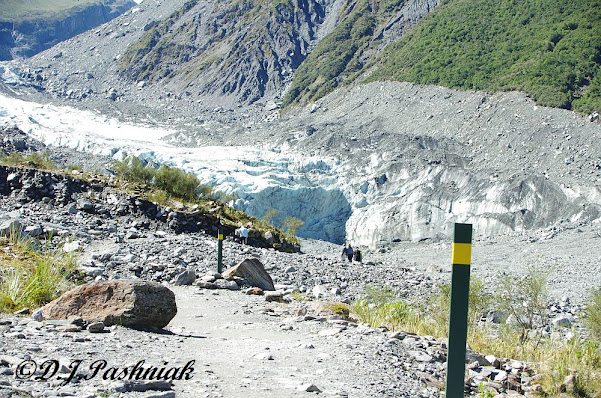This post is for World Bird Wednesday.
I went out to Inskip Point early on Friday morning to see whatever shorebirds were around. There are always birds to see out there but if you want to see greater numbers then you have to be out there on a high tide and when there are few people around. This means either early morning or last thing in the evening. I was out there early morning before any 4 wheel drive vehicles had driven around on the sand and before any fishermen had walked around. This photo is taken looking diagonally across the point to the car ferry which takes vehicles across to Fraser Island. The birds were spread out all along the waterline on the south of the Point.
When I was out there a couple of weeks ago there were huge numbers of Bar-tailed Godwits - many of them in breeding plumage. This time the Godwits had apparently left on migration because the ones I saw were in non-breeding plumage. These were possibly young birds that will spend the winter here. This time there were almost more Grey-tailed Tattlers than Godwits. Grey-tailed Tattlers around here usually roost in mangrove trees. This time they were standing on the sand in nearly full breeding plumage and looking very plump. I had not previously photographed Tattlers with this amount of breeding plumage so I was anxious not to disturb the birds but to get as close as possible. It takes lots of patience and very slow movements - sometimes standing still for several minutes before again slowly moving forward a few feet. If you watch the birds closely you can see when they start getting agitated prior to them taking flight. Then you stop and stand absolutely still! I started taking photos at one end of the flock and then was able to very slowly move right down to the other end - well almost! A raptor flew over and put every bird up at one stage but most of them came down again and roosted very close to where I was standing. You can tell how well I did at not disturbing the birds because most photos had some birds with their eyes closed and/or their beaks tucked back under their wings.
Three Tattlers and one Great Knot
(Above - I am not finding this new version of blogger easy! It hasn't let me put my photos where I want them!) Tattlers standing among Godwits - a useful photo for size comparison.
These two Tattlers were standing a little distance away from the others and I have cropped the photo to show just these two and the colors in the water and some leaves. The leaves have dropped off mangrove trees.
Two days later some friends went out at a similar time in the morning to also see the Tattlers and they were all gone! Apparently they had left on their northern migration sometime in those two days.
I was asked last week about my camera gear. I am using a Pentax K5 and this particular morning had on my Sigma 150-500 lens. I have been told by friends (and have also read) that this lens on a Canon Camera is not very sharp when zoomed all the way out. On my Pentax camera it does a good job and is as sharp as my other smaller lenses. The lens is heavy! I find it most convenient to use a monopod when I know I will be photographing for some time. There is good lighting early in the morning at Inskip when the birds are roosting on the southern side of the point so I have only cropped and re-sized these photos.









































